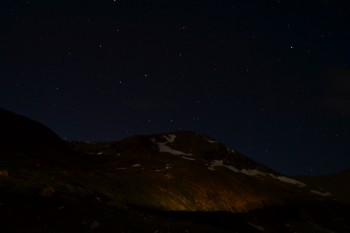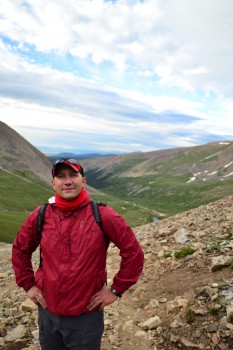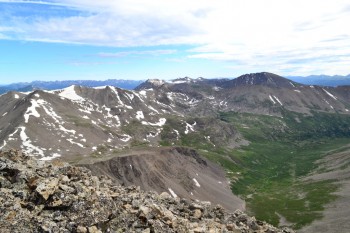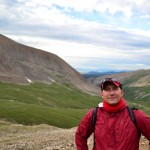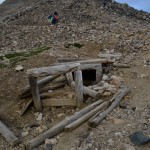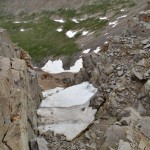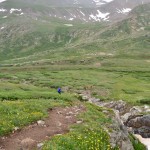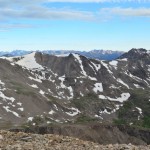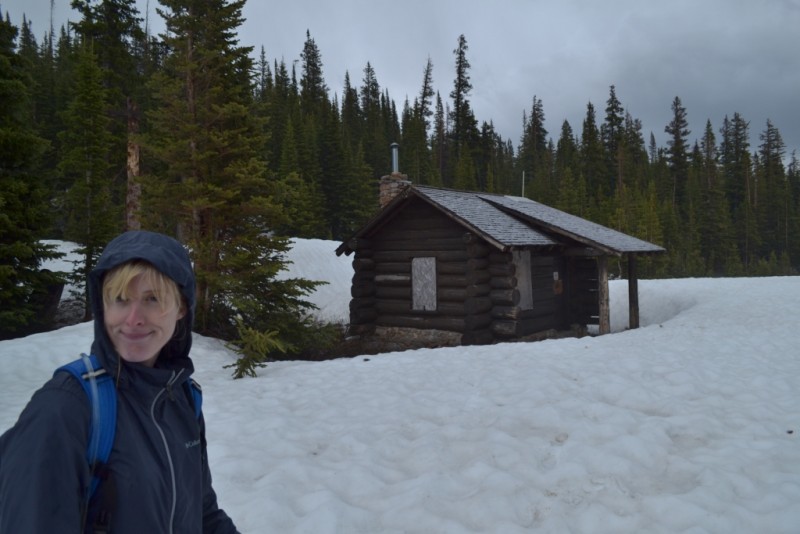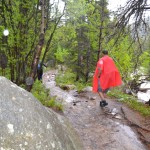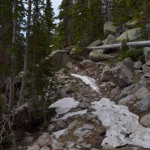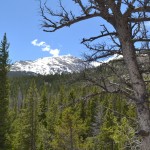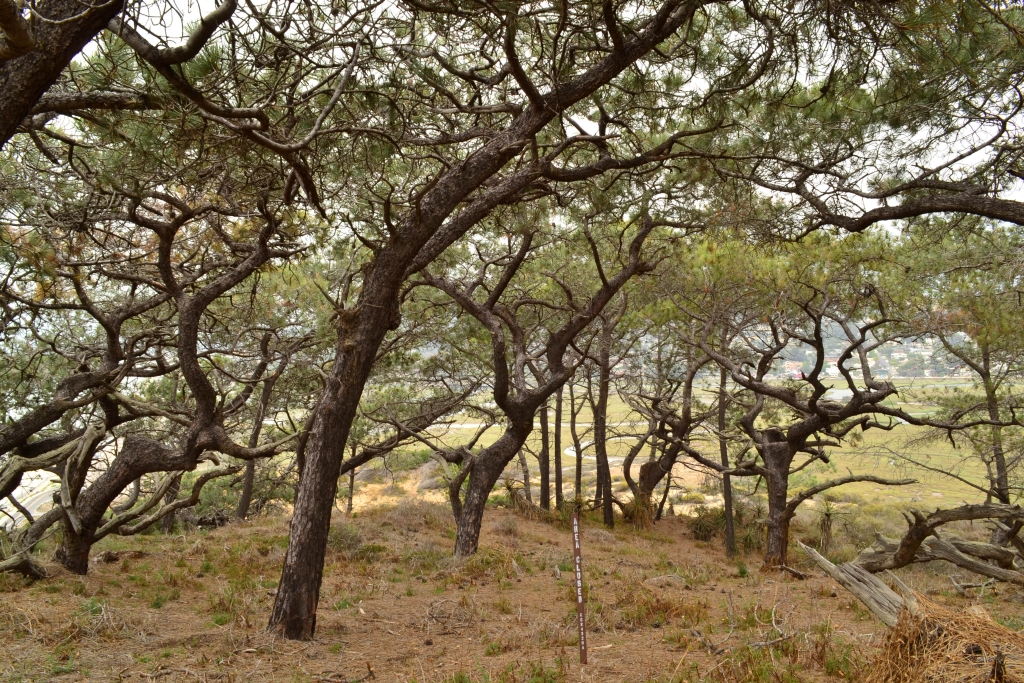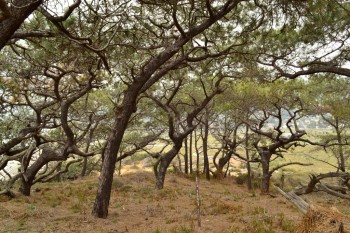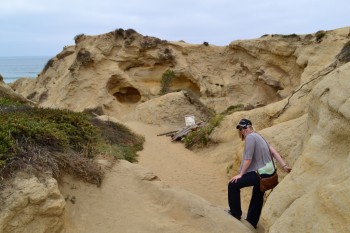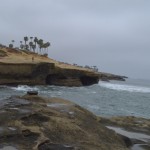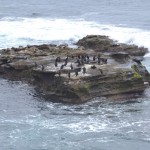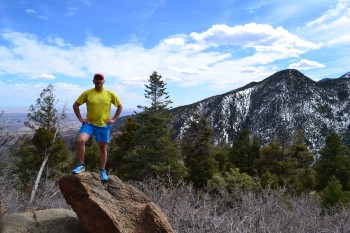Take a Walk
A Quest into the Wild
DeCaLiBron: Mt. Democrat, Mt. Cameron, Mt. Lincoln, Mt. Bross

During the late afternoon hours of July 23rd, we grabbed our camping gear and day hiking packs and loaded up the truck for an overnight adventure to complete the famous “DeCalibron”. The DeCalibron is a 7 mile, high altitude loop trail that allows hikers to tag the summit of three or four of Colorado’s 58 fourteeners (both official and unofficial). Due to the unpredictable weather of 2015 thus far, this was our first 14er attempt of the season. We arrived in Alma, CO, which is about 10 min north of Fairplay on Hwy 9, at about 8:00 pm and slowly proceeded up the old Kite Lake Trailhead road. After 6 miles of rough dirt/rock road we reached the Kite Lake Campground just before dusk. We quickly began to set up camp before the mountains completely covered the remaining glow of the sun. Nestled at 12,000 feet above sea level, this campground offers a truly exquisite alpine camping experience. There are 5 pay campsites each with a fire ring and some with a picnic table (rate: 12 dollars per night, parking 3 dollars). Seen below are photos of the Kite Lake Campground.
We hunkered down around 10:30 pm to get some sleep. There was also a large group of girl scouts from Texas camping at a nearby site and many late night car camper arrivals which made for a somewhat loud evening. We finally drifted off in the cold mountain air, and snuggled up in our sleeping bags until the the soft white light of morning drifted into the tent. The clock read 5:00 am. We were not quite ready to move. At 5:30 am, we braved the cold morning air and began to pack up camp and make some breakfast. At 6:30 am, we were on the trail. Seen below are photos of the trailhead, Kite Lake, and our early morning start.
We planned on summiting Mount Democrat first and then evaluating the weather and our stamina to determine whether to continue the loop route. The trip up Democrat proved to be as easy as a 14er can be. It was a beautiful cool morning hike, and we were greeted with sweeping views of the Sawatch Range and distant high plains. Old mining relics littered parts of the trail. When we reached the last half mile of the trek, the trail turned from Class I to Class II. We enjoyed climbing over some rocks and a little route finding before we reached the false summit. A short jaunt over a remaining snowfield as well as a 50 foot ascent up a well defined trail led us to the summit. Seen below are photographs of our ascent to Mt. Democrat.
We reached the summit at approximately 8:00 am, an hour and a half after we started. From the Kite Lake TH to the summit of Mt. Democrat is only about 2 miles and 2,150 feet of elevation gain. Mt. Democrat is 14,148 feet tall (some sites say 14,154) and ranked 28th in height compared to all official 14ers. Seen below are photographs of our first summit of the day/season!
It was still quite cold on the summit, and after a few photographs we began to descend to the saddle of Mt. Democrat and Mt. Cameron. Once we reached the saddle, we decided it was early enough to continue towards Mt. Cameron. We lost approximately 786 feet in our descent according to our GPS unit. It is roughly 873 feet of elevation gain to reach Mt. Cameron which serves as a mid way point to Mt. Lincoln. Mt. Cameron is approximately 14,238 feet tall, but isn’t classified as an official peak due to its lack of prominence from Mt. Lincoln. (It must rise at least 300 feet from the saddle). The trail is a bit rocky, but quite manageable up to Mt. Cameron. We hiked for a while on the ridgeline above 14,000 feet before actually reaching Cameron. Seen below are photos of the hike up the saddle and ridgeline.
Cameron has a large flat summit that was quite honestly anticlimactic. We shared the summit with only 2 other people, though it was large enough to have a party with over 100. We took a few photographs and continued onward. Seen below are photos of the summit of Mt. Cameron.
We could see the summit of Mt. Lincoln close by, and quickly began a mild descent into the saddle (156 feet) and a short climb back up to her summit (215 feet). Mt. Lincoln has a much smaller, rocky, jagged summit. It was quite different than Cameron and offered amazing views. Unfortunately, as we reached the top it started to sleet. It was 10:05 am. The weather forecast predicted sunshine all day. Another testament to the unpredictability of mountain forecasts. We took a few summit photographs, and a nice couple took our picture. Again we shared the summit with only two other people.
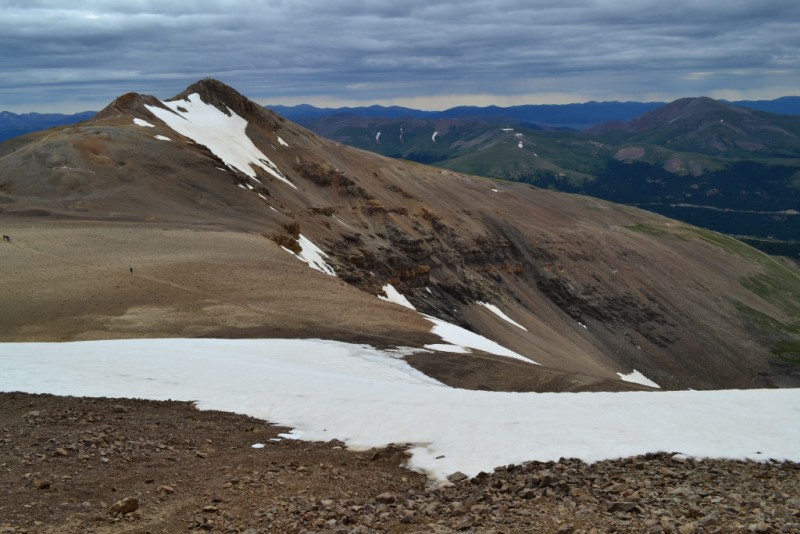
We proceeded down Mt. Lincoln and instead of heading back up Cameron, took the trail that skirted her summit and led toward Mt. Bross. The trail was mostly downhill and flat for much of the saddle between Bross and Cameron. This portion of the loop contained lots of red rock and maintained the look of a mined mountain. Needless to say, it wasn’t the most aesthetically pleasing of 14er routes. It should be noted that Mt. Bross, standing at 14,172 feet is a 14er that is currently deemed private property. There are several signs that state attaining her summit is illegal and that a a trail that circumvents the top of the summit is available as part of the loop back to the Kite Lake TH. 14ers.com states that hikers/climbers should respect these signs as officials continue to “work” with owners to allow for open access, and that climbing without permission may jeopardize this effort. Well, we called people with the 14ers initiative and spoke with various park rangers. There is no active effort that we could currently find into helping the public gain legal access to the summit. In fact, part of the problem is that several of the owners of Mt. Bross cannot be located to give permission. For legality reasons, we will not include in this post whether or not we reached the summit of Mt. Bross. Seen below are photographs summarizing our experiences with the Mount Bross portion of the trip.
The descent from the Bross portion of the loop was not a highlight of the hike for us. There was extremely loose rock and scree on very steep terrain. We kept thinking the trail would improve around the corner, but it never did. We saw several people fall on the way down (not off a cliff or anything). It also began to rain on the way down making conditions even more dicey. Seen below are photographs of the horrible descent.
As we got closer to the trailhead, a trail runner sped past us at top speeds down the scree field. These can be very humbling moments on the mountain, and we still have no idea how he managed to navigate that terrain while running. As the lake got closer and our legs got more tired, the trail opened up into a lush wildflower abundant meadow. A waterfall greeted us to our right. There was a silver lining to this portion of the trail after all, and it materialized in the form of a colorful array of botanical beauty. The most amazing part of this was the mind blowing diversity of wildflowers. Seen below are the wildflowers and falls near Kite Lake.
We concluded our trip back in the Kite Lake parking lot. The steady light rain had turned to heavy rain, and we were glad to be back. We reached the truck at about 12:45 pm which made our RT time 6 hours and 15 min. Overall, the route was moderate in our opinion compared to other 14ers. The sustained time above 13,000 feet on the route, and the Mt. Bross scree descent aided in this ranking. Accorrding to the Garmin Forerunner 15 GPS watch, we covered a little over 7 miles and 3,600 feet of net elevation gain. Overall, we highly recommend a visit to Kite Lake Campground and the amazing 14ers that tower behind.
Writing by Allyson Sandifer Checkley
Photography by Thomas Checkley
Thunder Lake Wild Basin: RMNP
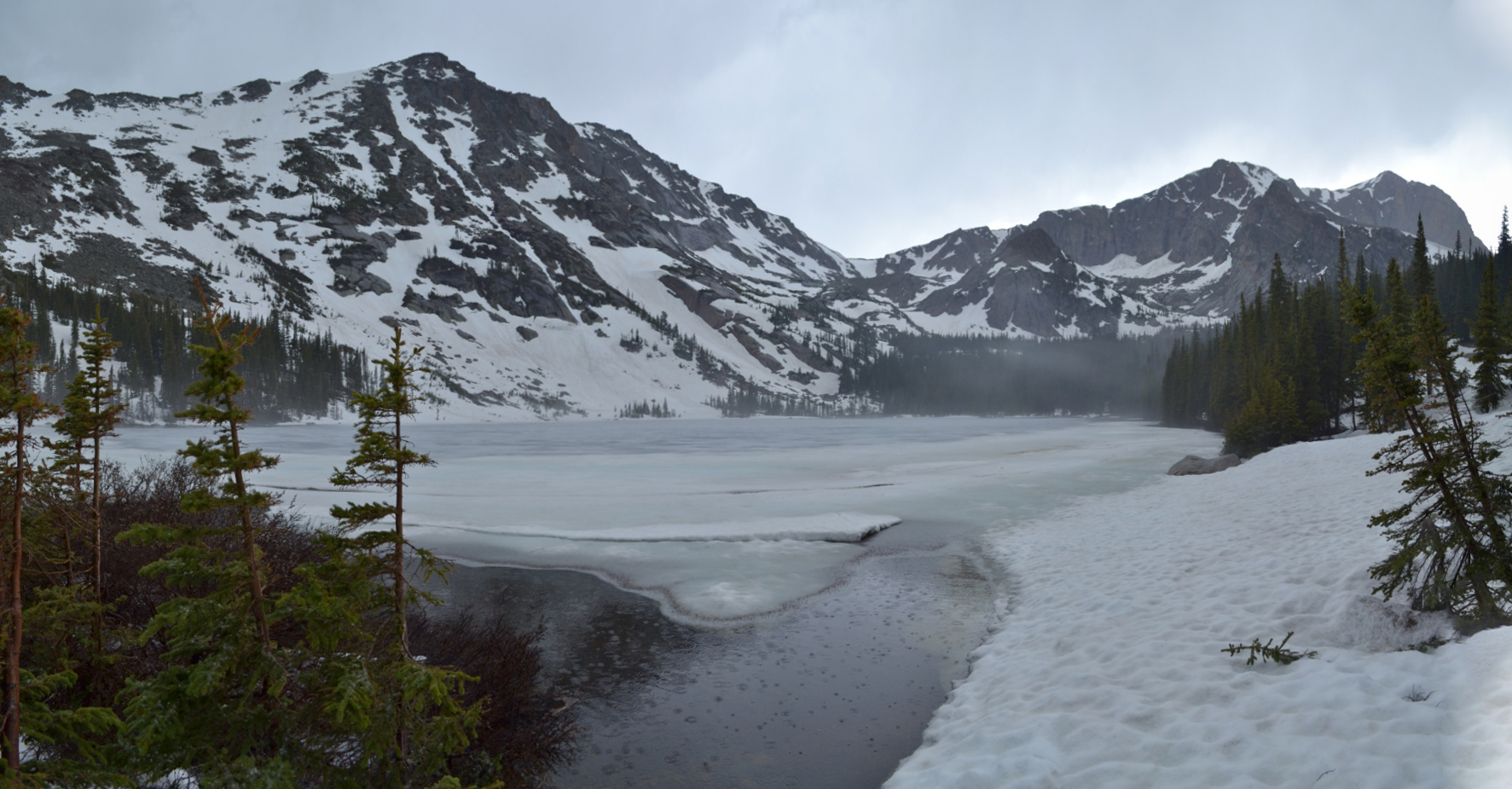

A week away from the summer solstice, we decided to try our luck with a mountain hike in Rocky Mountain National Park. The weather has been memorable to say the least this year in Colorado, and we weren’t entirely sure what to expect on the trail in early June. We arrived at Wild Basin’s summer trailhead at about 10:30 am, and quite unexpectedly got the very last parking spot. After some banter with the volunteer park rangers about which lake to pursue on our hike, we opted for Thunder Lake. Rangers informed us that no one had yet reported making it to Thunder Lake as the trail becomes muddled and lost in fields of snow about a mile from the lake. Previous trips to Wild Basin have taken us to most of the other lakes and destinations, so we decided to go for it.
Weather reports suggesting isolated storms for later in the afternoon, so we figured we might have a chance of getting rained on but we thought we’d make it out in time. We began on the familiar trail that follows along the St. Vrain to the majestic Copeland Falls. Due to the excessive rains this spring, the river was extremely high. Seen below is the St. Vrain during the first mile of the hike.
Due to the devastating floods of 2013, the Ouzel Falls bridge that leads to Ouzel lake and the junction for Thunder lake was washed away. We were told by park rangers that there are cairns leading around the top of the falls as a secondary means to cross, however the recent heavy rainfall made this route dangerous. Instead we took an old camping trail that skirts around the falls. Seen below is a map of the Wild Basin trail system courtesy of the National Park Service. The red arrow points to the connector trail we utilized. This stretch of trail was about 1.3 miles and led us mostly uphill through dense woodlands. We could hear the sound of the water and falls as we made our way along this trail. But, it was disappointing that we couldn’t see Ouzel Falls on this route anymore.

At the end of the connector trail, there is a sign indicating a trail junction. One way leads to Ouzel Falls, the other towards Thunder lake and Lion Lake #1. At this point in the hike, we met up with another solo hiker for company and continued upward towards the lake. As we gained elevation, we began to lose the warm temperatures we had grown accustomed to and began to see patches of snow. These patches of snow got larger and deeper once we passed the Lion Lake No. 1 trail junction. Seen below are photographs of the trail.



When we got about a mile from the lake, the trail disappeared. We ran into a a few other hikers who directed us to follow their footprints and veer left of the river. Unfortunately, we forgot our Garmin GPS and only had a cellphone fitness app to track our location. A few hundred feet in, and we had already lost signal. We used footprints, the river, and sun to guide us to the lake. The route took us up and down 10 foot piles of snow, though most of it was well packed in. About 100 yards from the lake, the sun vanished, the sky turned dark, and hail began to plummet down on us. We took shelter for 15-20 min under some dense branches of nearby trees. The hail didn’t stop. We saw what looked like a cabin 50 yards away and decided to make a run for it. It was the Thunder Lake Patrol Cabin, and it was locked. There was however a decent porch with an overhang that we took shelter under. Seen below are photos. We had to climb down 4 feet of snow to reach the porch.
We huddled under the porch for close to an hour with our new hiking friend. It was cold. Really, really really cold. We were pretty upset that the cabin was locked up tight with a sign on it that said breaking and entering could lead to prison time. When the hail turned into a steady rain, we decided that since we made it all the way to the lake, we should at least walk up to its banks. Thunder lake is quite stunning with large picturesque mountains standing proudly behind it. It was still mostly frozen in early June. Seen below are photographs.
We stood at the lake for 5 min. It was 6.5 miles of uphill work for a few moments of quiet beauty. Was it worth it? Of course. The mountains rewards are great but always hard-earned. We then headed back to find our trail. This proved to be very difficult. The hail and rain had covered up our footprints from earlier. We had to rely on memory and landmarks to get back. We had one moment of anxiety which developed when we lost our way for a moment. Luckily a small frozen lake directed us back. We finally made it to a distinguishable trail. The rain kept coming and was much heavier now. Waterproof clothes proved to be otherwise. When we made it back to the St. Vrain, much of the trail was beginning to flood. We finally saw the welcome sight of the warm X-terra, climbed in and headed to Estes Park to celebrate our rain-drenched, hail-pummeled, snow-filled trek to Thunder Lake. The name was quite fitting after all.
Below is a map of the route. We traveled about 12.3 miles RT and gained a little over 2000 feet in elevation.
Writing and cartography by Allyson Sandifer Checkley
Photography by Thomas Checkley
Manitou Incline: Manitou Springs, CO

Distance: 4.0 miles (.89 mile up incline; 3.1 down Barr Trail ) Elevation Gain: 1,944 ft. (total)
Max Elevation: 8,576 ft. Min. Elevation: 6,605 ft.
Usually in early spring or winter, we are quite content leaving the task of ascending 2000 feet in just under a mile to the mechanical ski lift, which has been helping the masses ascend to the heavens both quickly and comfortably since 1936. Some lapse in our judgement occurred this weekend, perhaps caused by the first sights and sounds of Springtime developing on the Front Range. While we haven’t hung up our skis entirely for the season, we did opt for a change of pace and decided to test our fitness levels on the famous Manitou Incline.
Originally built for cable cars to carry pipeline supplies to the summit of Pikes Peak, the Manitou Incline now remains solely for those testing their fitness. Up until this past fall, all that was left was old rotten cable ties, with random pipes and stakes jutting up and around the incline. In fact, due to the dangerous terrain (as well as private property battles) it was illegal to hike the trail until early 2013, although it really stopped hardly anyone from trying. About 20% of the trail has just recently been restored, making travel much less hazardous in the steeper sections. Various news stories and guide books have compared the incline to “climbing the empire state building…twice”. Seen below is the first tie… the first of many.
Most people start the incline with a time goal in mind, while others just hope to make it to the top without collapsing. For our first time up, our goal was to just finish in under an hour. The official record is held by Olympic athlete Apolo Ohno at 17:45. The fastest unofficial time is held by Mark Fretta at 16:42. Many enthusiasts do not recognize this time due to Fretta violating anti-doping rules and regulations. The first third of a mile on the incline in our opinion was not overly strenuous. We were both able to maintain a steady pace with out stopping. Seen below are photos of the incline during the first half mile.
Just past the halfway point as the trail begins to steepen, there is a bailout point with access to the Barr Trail. The Barr Trail is the recommended route down, due to the danger of traveling down the incline as well as the risk of over congestion with two-way traffic. Locals apparently call this the “wimp-out” or “wuss-out” spot. Nonetheless, reaching this point isn’t exactly easy. We trudged onward and upward from here as things became more tough. Seen below are photos of the upper portion of the incline and views from the “false summit.” The incline is so steep at this point, that hikers are not able to see the true summit leading the naive to think they are almost done. There are still 300 steps to reach the top from here.
The last 300 steps were only spread out by about 0.1 miles. It was steep and tough. But we both completed the Incline in under an hour. One thing we noticed on the trail was the genuine sense of camaraderie among all the hikers. Everyone was in the challenge together and offering one another words of encouragement. Seen below are photos at the top and the view of Manitou Springs below.
After resting a couple of minutes and chatting with some other hikers, we headed back down via the Barr Trail. The trail was almost completely dry and consisted mainly of a long series of switchbacks. According to our GPS, it was about 3 miles back down to the upper parking lot. Many people chose to run down the switchbacks, but we took our time and enjoyed the scenery.
We finished the trail with a sense of accomplishment. It was a great workout, and if we lived closer we would do it more often. We are now more inspired to get some weekly workouts in at the stairs of Red Rocks. If you choose to do the hike, wear lots of sunscreen and bring lots of water. Also, parking does fill up quite fast and is 5 dollars, credit card only. And, if you can still walk afterwards, take some time for a stroll around the arcades and shops of Manitou Springs. Happy hiking and spring. …and look for more frequent posts from us now that our beloved Colorado summer is nearer each day.


